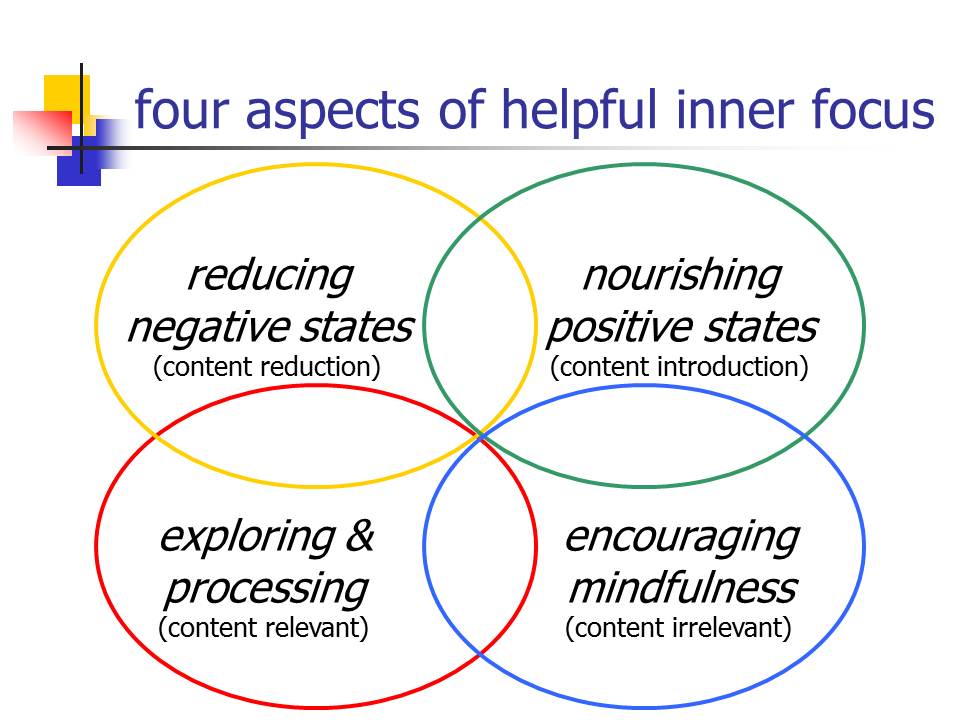Life skills for stress, health & wellbeing, tenth session (part 2 - therapeutic writing)
Last updated on 2nd December 2010
I wrote yesterday about the first part of this tenth "Life skills" evening. I particularly discussed development of Goodwill practice - very much in the "Nourishing positive states" section of the "Four aspects" diagram (below). In the second half of the evening we moved on to the "Exploring & processing" section of the diagram with the introduction particularly of various forms of therapeutic writing.

